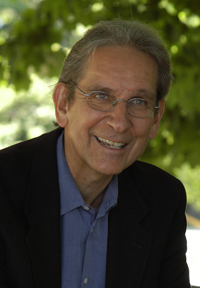 |
John J. Ratey, M.D. |
The lecture, which is sponsored by the UNMC Department of Neurological Sciences, is titled, “Spark: The Revolutionary New Science of Exercise and the Brain.”
The lecture title is the same as Dr. Ratey’s new book, which was released in January. His talk will focus on exercise as a key to solving some of the most prominent health problems.
The lecture — which will be held in the Durham Research Center Auditorium — is open to the public. Lunch will be provided for the first 300 attendees.
“Exercise is the single most powerful tool we have to optimize brain function,” Dr. Ratey said. “This potent idea has been proven not only through the latest studies in neuroscience but also on the playgrounds of some of America’s schools. The evidence is astounding — exercise not only makes us smarter; it also makes us less stressed, depressed, and anxious.”
Dr. Ratey’s book lauds the benefits of exercise in improving cognitive function, reducing stress, weight, depression and memory loss associated with age.
To boost brain health, Dr. Ratey recommends committing to six hours of exercise a week.
“The best regime is some form of aerobic activity six days a week, for 45 minutes to an hour,” he said. “Four days should be on the longer side, at moderate intensity, and two on the shorter side, at high intensity.”
|
“These days should not be back to back,” Dr. Ratey said. “Your body and brain need recovery time to grow after high-intensity days.”
Pierre Fayad, M.D., chairman of the UNMC Department of Neurological Sciences, said he is excited to have Dr. Ratey to present the Harman lecture, which was established by the University of Nebraska Foundation to honor the scientific achievements of Dr. Harman, 92, UNMC emeritus professor of internal medicine who is known internationally as the father of the free radical theory of aging.
“We are honored to host Dr. Ratey’s visit, which brings to focus new horizons in brain function,” Dr. Fayad said. “His insight and ideas bring us back to the fundamental aspects of brain function — first that the brain is a living and adaptable organ, and two, that strengthening and preserving brain function does not necessarily always require the use of medications. In more simple terms, it reminds us of the old adage, ‘Use it or Lose it.'”
As a clinical researcher, Dr. Ratey has published more than 60 papers in peer-review journals in the fields of psychiatry and psychopharmacology. In 1986 he founded the Boston Center for the Study of Autism, and in 1988 he founded a new study group of the American Psychiatric Association focused on the study of aggression, which grew out of his research and development of novel drug treatments for aggressive behavior.
During this time Dr. Ratey lectured internationally on aggression and disturbances in the brain that affect social functioning.
Dr. Ratey also has a private practice in Cambridge, Mass. For more than a decade he taught residents and Harvard medical students as the assistant director of resident training at Massachusetts Mental Health Center. He continues to teach psychiatrists as a regular instructor in Harvard’s Continuing Medical Education program.
He and Edward Hallowell, M.D., began studying attention-deficit/hyperactivity disorder (ADHD) in the 1980s and in 1994 co-authored “Driven to Distraction: Recognizing and Coping with Attention Deficit Disorder from Childhood through Adulthood (1994),” the first in a series of books that demystify the disorder. Dr. Ratey also co-authored “Shadow Syndromes” with Catherine Johnson, Ph.D., in which he describes the phenomenon of milder forms of clinical disorders.
In 2000, he wrote the bestseller, “A User’s Guide to the Brain: Perception, Attention and the Four Theaters of the Brain,” which translates how neuroscience affects emotions, behavior and overall psychology.
Since 1998 Dr. Ratey has been selected each year as one of the best doctors in America by his peers. Most recently, Dr. Ratey was the recipient of the 2006 Excellence in Advocacy award from the non-profit group PE4Life, for his work to promote the adoption of regular, aerobic-based physical education.
In 1976, he earned a doctor of medicine from the University of Pittsburgh School of Medicine. From 1976 to 1977, he did an internship in neurology at St. Francis General Hospital in Pittsburgh. In 1980, he completed a psychiatric residency at Massachusetts Mental Health Center in Boston, and from 1978 to 1980, he completed a Falk Fellowship with the American Psychiatric Association.
Click here to see more information about Dr. Ratey.